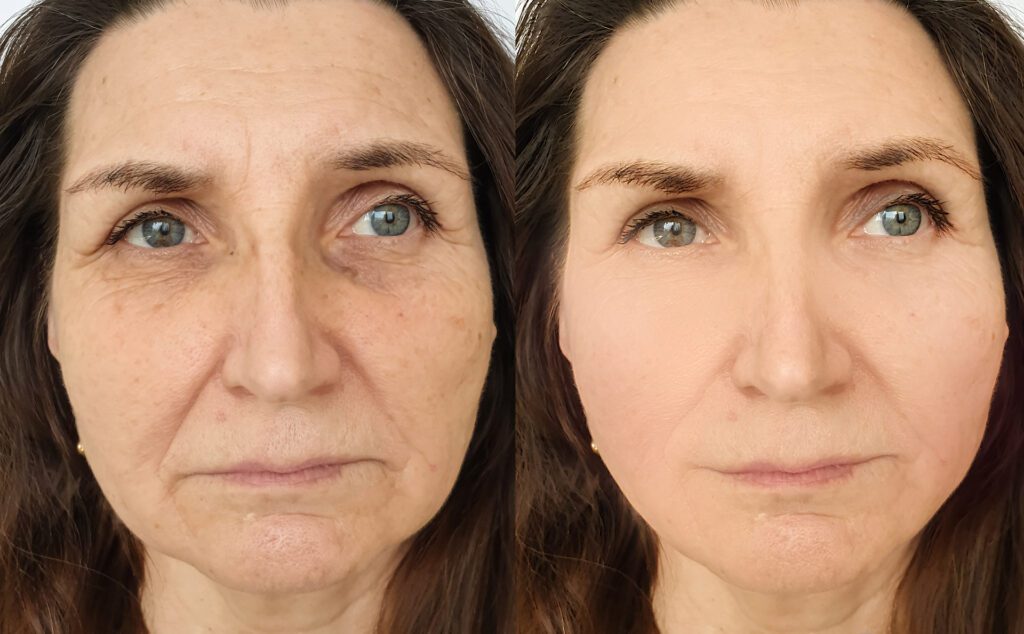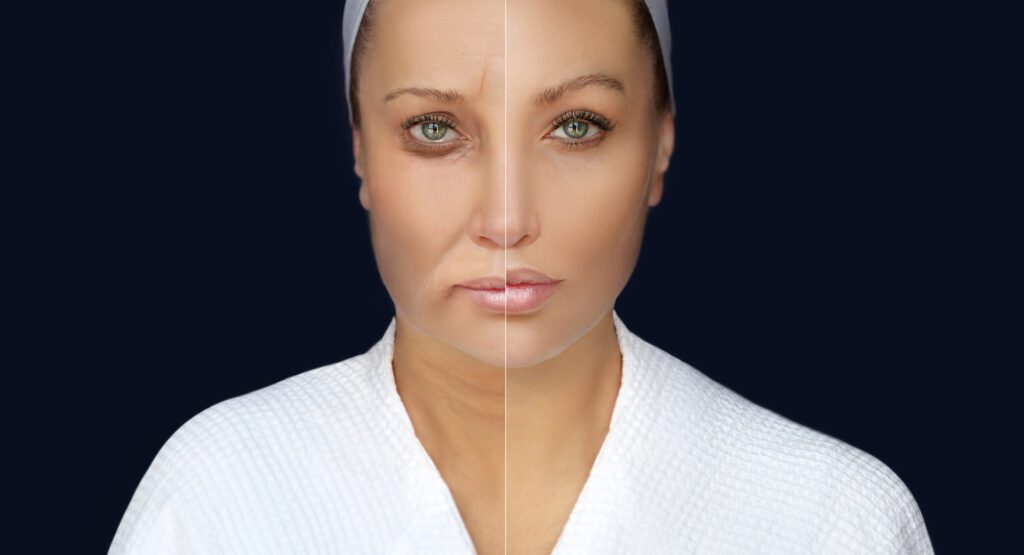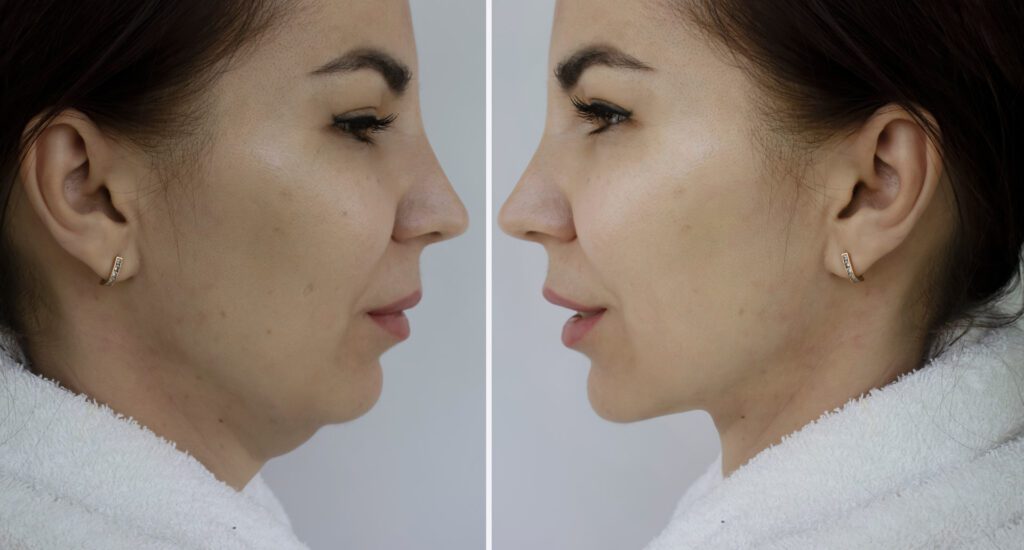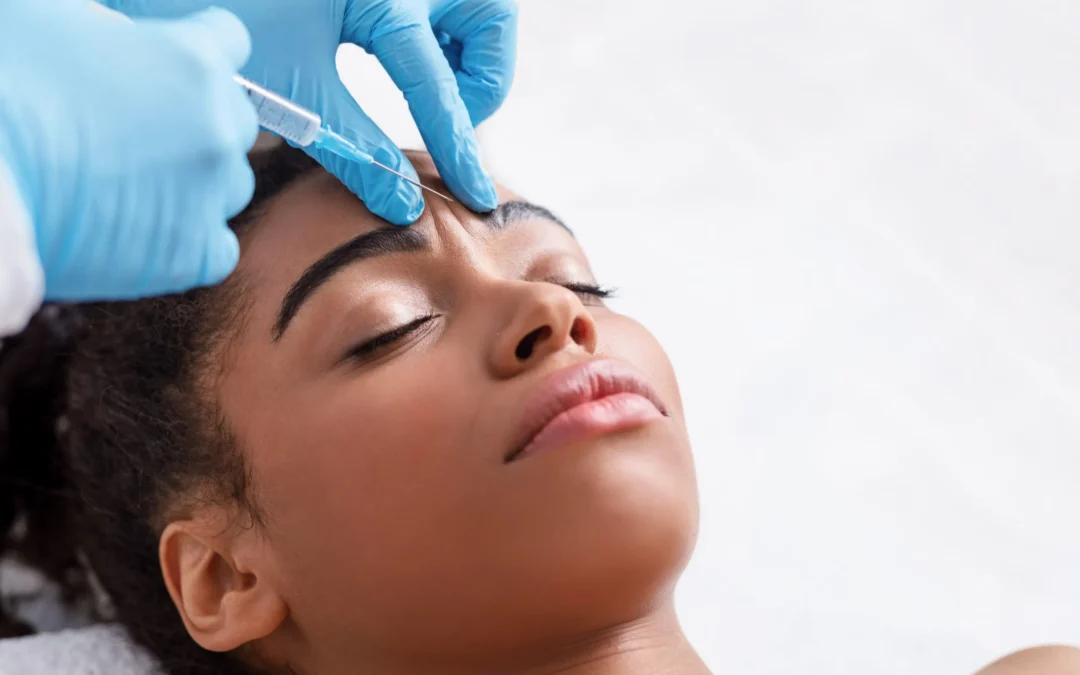Botox injections are a popular cosmetic procedure around the world, but it’s important for individuals to be aware of the potential risks and side effects associated with the treatment. Consulting with a qualified medical professional is crucial to ensuring a safe and successful experience with Botox. In this article, we will explore the benefits and drawbacks of Botox for Mauritians, as well as learn more about where Mauritians can seek such interventions.
What is Botox, and how does it work? Explaining the concept and its uses.
Botox®, a brand of botulinum toxin injections, is a neurotoxin that temporarily weakens muscles by blocking nerve signals, preventing them from contracting. While widely recognised for their cosmetic applications in smoothing wrinkles by relaxing facial muscles, Botox injections also serve a range of medical purposes. Healthcare professionals administer controlled amounts of Botox into specific muscle groups, depending on the targeted area of concern, be it migraines, excessive sweating, or other conditions benefiting from localised muscle relaxation. The effects are transient but can last several months, during which the injected muscles remain in a relaxed state. Botox treatments typically involve injecting multiple areas simultaneously to address various cosmetic or therapeutic needs in a single session.
Cosmetic conditions that can be treated with Botox
Botox cosmetic injections have become a popular solution for combating the visible signs of ageing on the face. By strategically administering the neurotoxin to specific muscle groups, this treatment can effectively smooth out fine lines and wrinkles across various facial regions. Common target areas for Botox injections include the eyebrows, forehead, nose bridge, outer eye corners (crow’s feet), lips, chin, jawline, and even the neck area. The precise injection sites are determined by the individual’s unique pattern of wrinkles and areas of concern, allowing for a customised approach to achieve a more youthful and rejuvenated appearance.
Botox’s Medical Uses
While Botox is primarily known for its cosmetic benefits, it also has medical uses such as treating migraines, excessive sweating, and muscle spasms. These medical applications of Botox can provide relief for individuals suffering from these conditions, and it is important for Mauritians to be aware of these options for potential treatment. Additionally, understanding the full scope of Botox’s capabilities can help individuals make informed decisions about their healthcare.
List of medical conditions that can be treated by Botox:
- Crossed eyes (strabismus).
- Excessive muscle contractions (dystonia).
- Excessive sweating (hyperhidrosis).
- Eyelid twitching.
- Chronic migraines.
- Overactive bladder.
- Paediatric upper limb spasticity.
- Adult spasticity.
- Blepharospasm.
- Cervical dystonia.
Is Botox dangerous?
When administered by qualified and licensed medical professionals, Botox injections are considered a safe cosmetic and therapeutic treatment option. However, it’s crucial to consult with your healthcare team to determine if this neurotoxin injection aligns with your specific needs and goals. Your medical providers can evaluate your individual circumstances, discuss potential risks or contraindications, and advise whether Botox injections are the appropriate choice for you, ensuring a well-informed decision-making process.
Reasons to Consider Botox
Botox injections can be considered for a variety of reasons, both cosmetic and medical. From a cosmetic perspective, some of the main motivations include reducing the appearance of fine lines and wrinkles, achieving a more youthful and refreshed look, and targeting specific areas of concern such as forehead lines or crow’s feet around the eyes. For many, Botox treatments can provide a boost in self-confidence and self-esteem by enhancing their desired appearance. Additionally, in certain professions or industries where maintaining a youthful, polished look is valued, Botox can offer a competitive edge.
Botox can also be used at different periods of life:
- By using Botox in your twenties, you can postpone the onset of wrinkles and the ageing process.
- Botox smoothes away the earliest wrinkles in your thirties, leaving you looking young and refreshed.
- Botox helps you look younger while you’re in your forties and beyond by eradicating the obvious symptoms of ageing and delaying the onset of new ones.
- Botox can be used by adults of any age.
The Benefits of Botox
Other than providing a boost in confidence and self esteem, Botox has its own set of benefits when it comes to the intervention itself. Botox treatments are minimally invasive and require little to no downtime, making them a convenient option for those with busy lifestyles. One of the major advantages of Botox injections is the relatively quick and long-lasting results they offer. Unlike more invasive cosmetic procedures, the effects of Botox become visible within a few days to a week after treatment, allowing individuals to enjoy a refreshed and rejuvenated appearance in a short timeframe. Additionally, the results of Botox injections can last for several months, typically between three and six months, before the muscles gradually regain movement and the treatment needs to be repeated. This longevity means patients can maintain their desired look for an extended period of time without frequent touch-ups. Overall, Botox injections are a popular choice for those looking for a non-surgical solution to reduce the appearance of wrinkles and fine lines. The convenience of minimal downtime and the ability to achieve natural-looking results make Botox a preferred option for many individuals seeking cosmetic enhancement.
Potential Risks and Side Effects of Botox
While Botox injections are generally considered safe when administered by licensed and skilled healthcare professionals, there is a potential for undesirable outcomes or complications if the procedure is not performed correctly. Some of the possible side effects and unwanted results may include pain, swelling, or bruising at the injection site, headaches, flu-like symptoms, droopy eyelids, asymmetrical eyebrows, a crooked smile, drooling, watery or dry eyes, and even infections at the injection site.
In rare cases, the botulinum toxin may unintentionally spread to other areas of the body, causing symptoms in those regions. If you experience muscle weakness, vision problems, difficulties with speech or swallowing, breathing issues, allergic reactions, or loss of bladder control hours or weeks after the procedure, it is crucial to seek immediate medical attention from your healthcare provider.
As a general precaution, botox injections are not recommended for individuals who are pregnant or breastfeeding, as the potential risks to the developing foetus or nursing infant are not well understood.
Who should avoid Botox?
Botox should be avoided during pregnancy and breastfeeding due to the potential risks to the developing foetus or nursing infant. Additionally, individuals with neuromuscular diseases, pre-existing drooping eyelids (ptosis), or weak facial muscles may not be suitable candidates for Botox injections, as the treatment could exacerbate or worsen these conditions. In such cases, it is important to consult with a qualified healthcare professional who can thoroughly evaluate the individual’s medical history and assess the potential risks and benefits of the procedure.
Preparing for a Botox Intervention: What Should I Expect?
The Botox treatment process involves your healthcare provider using a fine needle to administer small amounts of the neurotoxin into the targeted area. Depending on the specific condition or concerns being addressed, you may receive multiple injections at different sites.
Botox is an outpatient procedure, meaning you can return home the same day after receiving the injections. Most patients experience only mild discomfort during the process. While the injections may cause a brief stinging or uncomfortable sensation, the procedure is relatively quick. Your healthcare provider may apply a topical numbing agent to the treatment area beforehand to minimise any potential discomfort.
Aftercare of the Botox Intervention
In most cases, you can resume your normal work and daily activities immediately following a Botox treatment, unless your healthcare provider advises otherwise. To minimise potential side effects like redness, swelling, or bruising at the injection sites, it’s recommended to follow a few simple aftercare instructions:
- Refrain from rubbing or applying pressure to the treated area for at least 12 hours after the procedure. This will prevent any disruption to the injected neurotoxin and allow it to settle properly.
- Maintain an upright position and avoid lying down for three to four hours following the treatment. This will help prevent the botox from spreading to unintended areas.
- Strenuous physical exertion or exercise should be avoided for the first 24 hours after the injections. This precaution allows your body to recover and minimises the risk of increased swelling or bruising.
By adhering to these straightforward aftercare guidelines, you can help ensure optimal results and a smooth recovery process after your Botox treatment.
Where to get Botox treatments: Centre de Chirurgie Esthetique de L’Ocean Indien
Located in Mauritius, Centre de Chirurgie Esthetique de L’Ocean Indien offers professional Botox treatments performed by experienced and skilled professionals. Their state-of-the-art facility provides a comfortable and safe environment for your cosmetic procedures. Whether you are looking to reduce wrinkles or treat migraines, their team is dedicated to helping you achieve your desired results with precision and care.
Before and After: Real-Life Botox Experiences




